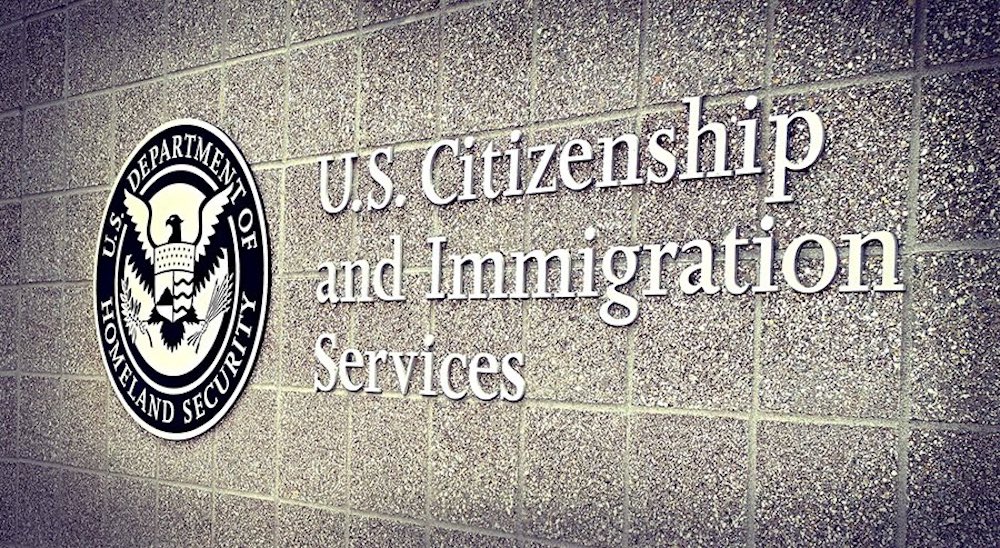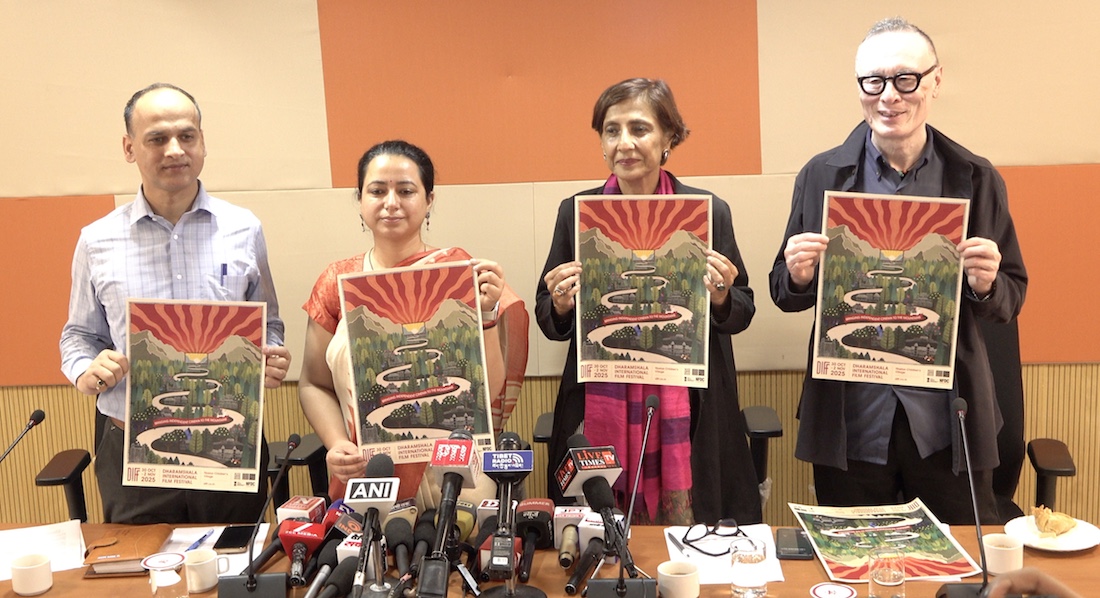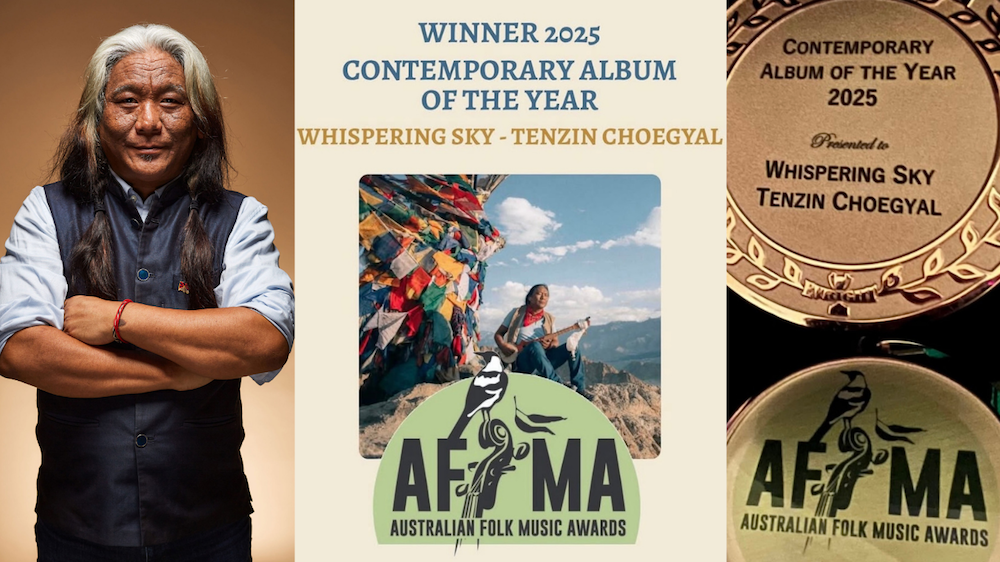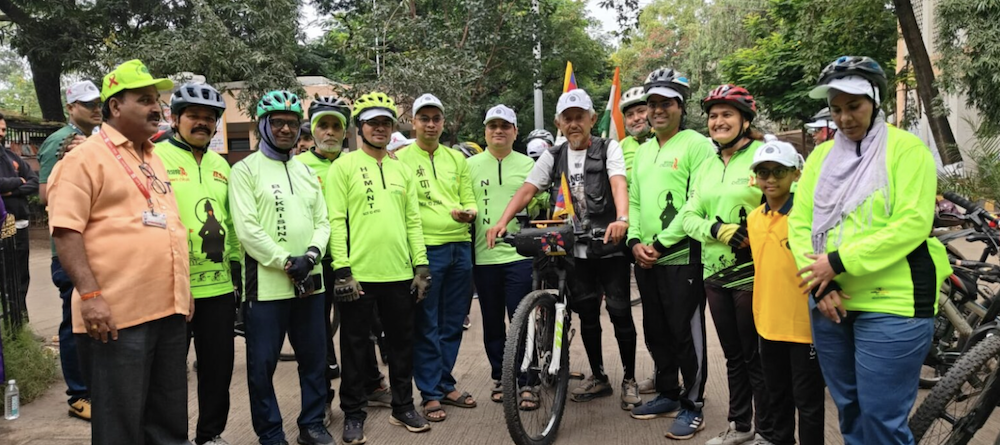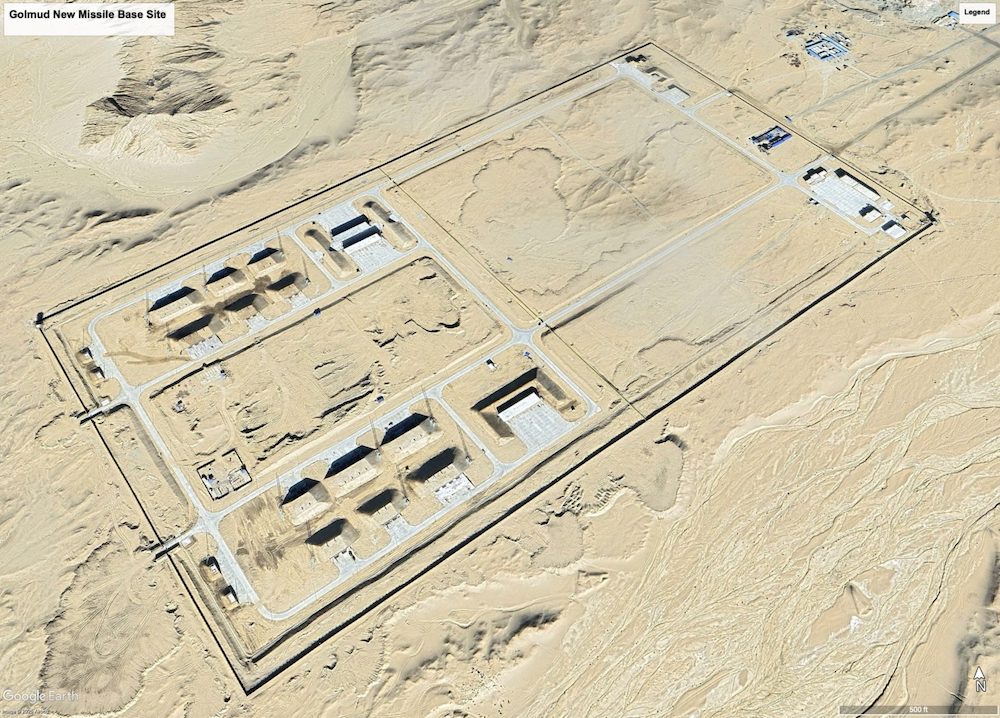By Giovanni Vassallo with Tsering Gyurme and Diane Hume
Dec. 10, 2006: A succession three heavy rain and wind storms were not enough to keep hundreds of Tibetans, friends of Tibet and others from attending a 21 year old San Francisco tradition: Tibet Day. The 21st Annual Tibet Day was held for the first time at the Sunset District’s Saint Anne Events Center. This December 10 community and cultural fair also marked the 17th Anniversary of His Holiness the Dalai Lama receiving the Nobel Prize Peace, as well as International Human Rights Day, the 58th Anniversary of the signing of the UN’s Universal Declaration of Human Rights.
The program began with an opening blessing by the Ven. Khen Rinpoche, Geshe Thupten Dawa, abbot of Namgyal Monastery, assisted by Ven. Ngawang Khenrab of Nechung Buddhist Center, Albany, California. Then there were the singings of the anthems of the United States of America and Tibet. After welcoming remarks by Giovanni Vassallo, President of the Bay Area Friends of Tibet (BAFoT) and Tenzin Tsephel, President of the Tibetan Association of Northern California (TANC), crowds flocked to the stage to offer of numerous good luck scarves to Tibet’s temporal and spiritual leader, His Holiness the Fourteenth Dalai Lama, at a throne set with His portrait.
US Government officials support Tibet, Tibet Day, His Holiness, and Human Rights
Speaker-Elect of the United States House of Representatives, Congresswoman Nancy Pelosi was represented by her staff-person, Harriet Ishimoto, who read her statement at the event, which called for international support to the Dalai Lama’s efforts for negotiations with the Chinese Government and the doubling of efforts to bring freedom to the Chinese and Tibetan people. The full text of Congresswoman Pelosi’s remarks is available near the end of this article. Ms. Ishimoto also expressed her best wishes for the success of the Tibetan Community Center of Northern California (TCCNC).
Congressman Tom Lantos, the ranking member on the House International Relations Committee, in a statement read by his Special Human Rights Assistant, Margery Farrar, recalled the brutality he received when Hungary was occupied by Nazi Germany and compared it to the brutal Chinese occupation of Tibet. Congressman Lantos stated that “Continuing accusations by Chinese government representatives that the Dalai Lama represents a so-called “splittist” influence are entirely false, and by now the Chinese government has no excuse whatsoever to fail to understand this major point.” Mr. Lantos’s statement assured that as the incoming Chairman of the House International Relations Committee that he would confidently “continue to engage fully with China’s leaders regarding their government’s actions that have negatively affected the human rights and security of their own peoples and the entire world.” Congressman Lantos’s full statement is copied at the end of this article.
Representation of Congresswoman Barbara Lee was announced at the event and was in the form of a Special Certificate of Congressional Recognition sent to each of Tibet Day’s organizers, the Tibetan Association of Northern California (TANC) and the Bay Area Friends of Tibet (BAFoT). The certificates are made available to persons or individuals to congratulate for achieving a qualifying public distinction and for outstanding public service to the community.
The Mayor of San Francisco, Gavin Newsom had also sent The City and County of San Francisco Certificates of Honor to TANC & BAFoT for organizing the 21st Tibet Day 2006. Each certificate stated that as a day of celebration to peace, human rights, and community, the organizers lead “by example,” which he was “pleased to recognize and honor.”
US President George Bush who had been invited to speak declined to attend due to scheduling conflicts; however, he sent his “Best Wishes” for the success of the event.
A moment of silence was held at Tibet Day in memory of a great friend of Tibet, a member of the Committee of 100 for Tibet, Jeanne Kirkpatrick, who was the former United States Ambassador to the United Nations, who had passed away Friday, December 8, 2006.
Community Fair
The day served many purposes. It was a major fundraising drive for the Tibetan Community Center of Northern California. Tibet Day also brought together a unique web of Tibetan vendors, Tibetan Buddhist organizations, Tibetan entertainers including Semshug Pundha, Tibetan Child Star, Tenzin Kunsel, photographers of Tibetan culture, a Tibetan doctor Yangdron Kalzang, author Thomas Laird, ardent lovers of Tibet and representatives of various Tibetan human rights organizations.
TANC honored Tashi Techung with a special commemorative plaque for his recent winning of a US music award. Techung is a Tibetan singer living in the US has won the best Asian album award for his compilation of freedom songs at the 2006 Just Plain Folks (JPF) Music Awards in Los Angeles. “A Compilation of Tibetan Folk and Freedom Songs” is a solo album by Techung that deals with traditional Tibetan music and opera. JPF is one of America’s largest grassroots music communities.
Attendees were presented with several options to spend their time at material exhibitions to inform the public about the rich cultural heritage of Tibet, as well as the ongoing political situation in Tibet. The fair included a Tibetan film festival which showed such films as Satya, Tibet: Cry of the Snow Lion, a film on the recent Nangpa Pass killing of unarmed Tibetan refugees fleeing Tibet, as well as film entitled Devotion and Defiance. Other slideshows presented included images of recent trips to the Tibetan regions of Amdo and Kham as well as a Tibetan Buddhist Nunnery. Representatives of the many of the represented groups working for Tibetans gave updates on their continuing works.
Author Thomas Laird gave a slide show about his book, The Story of Tibet, Conversations with the Dalai Lama. Thomas Laird spent over sixty hours interviewing and probing His Holiness the Dalai Lama about the unique history of Tibet. His book refutes every major Chinese Community propaganda claim on Tibet and Tibetan history.
Numerous individuals purchased raffle tickets for prizes made available by the Tibetan vendors and merchants. Also, items, such as a collector’s edition of at 1959 Life magazine, with His Holiness gracing the cover, were auctioned. Proceeds from the auction went to benefit the capital campaign for the Tibetan Community Center of Northern California.
Attendees also had munched on plates of world-famous Tibetan dumplings, momos, prepared for the occasion by an army of TANC volunteers.
Tibetan merchants, vendors, nonprofit organizations and individuals participating at the fair included The Tibet Shop, Tibet Moon, Dilo Lama, Tenzing Gallery, The Tibetan Nuns Project, Tibet Himalaya House 1, Tibet Art & Gifts, Tsering Jewelry, Tibetan Gift Corner, Pachen from Palo Alto, Thukson Bachen/Gangchen, Tibetan Gift House, Tibet Books & Designs, Tibet Treasures Tsa Tsa Studio, Tibetan Aid Project, Nechung Tibetan Buddhist Center, Tsering Gyurmey, Choekyi, Tibet Oral History Project, The Dalai Lama Foundation, The Committee of 100 for Tibet, Students for a Free Tibet, the Regional Tibetan Youth Congress, the Tibetan Nyingma Institute, The Sogan Foundation, Tibet Justice Center, and others.
Dhondup Tsering, ex-RTYC president and member of Semshug Pundha, was instrumental in securing a $1,000 donation from Wells Fargo Bank that helped underwrite the costs of the event.
Panel Discussion on a “Path to Peace”
A panel discussion entitled “A Path to Peace” included as panelists, the President of the Regional Tibetan Youth Congress, Dawa Dorjee, Students for a Free Tibet’s regional coordinator, Yangchen Chagzoetsang, as well as author and Tibet researcher, Thomas Laird and Christine Lin, an activist representing the Falun Gong, a religious sect persecuted by the Chinese government’s Communist Party. Mr. Dorjee articulated that Tibetan struggle is a “People’s movement and that Tibetans inside Tibet need to be able to decide their own future.” Thomas Laird spoke about His Holiness’s vision for peace. He said that fighting for peace was not about shouting and yelling, rather about educating oneself about China and Tibet and then taking positive action. Ms. Lin described the persecution of thousands of Chinese Falun Gong practitioners and the abusive treatment, including organ harvesting allowed by the Chinese Communist Party (CCP) of the People’s Republic of China and mentioned that Tibetans in Tibet should educate themselves about the true nature of CCP, which could be obtained by a thorough reading of the “9 Imperatives,” editorials by the Epoch Times. She suggested that Tibet would be free once it frees itself of the CCP. The panelists encouraged specific actions to help free the Chinese and Tibetan people from oppression such as faxing messages calling for human rights protections to Chinese embassies and consulates, education on factual Chinese and Tibetan history and taking appropriate actions in response to this history, understanding the true nature of the Chinese Communist Party and auto-telephoning millions of Chinese and Tibetans about the Communists, and supporting Students for a Free Tibet’s human rights campaign around the Beijing 2008 Olympics Games. The panel’s moderator, Mr. Vassallo respectfully informed the audience about the wide consensus that the best short term for shedding light on the situation in Tibet was to focus on the human rights campaign surrounding these Beijing-based Olympic Games.
Candlelight vigil
Tibet Day’s evening program began with a candlelight vigil led by the representatives of the Regional Tibetan Youth Congress. The main reason for the vigil was the killings by Chinese soldiers at the Nangpa Pass of unarmed refugees fleeing Tibet. The President of BAFoT, Giovanni Vassallo spoke at the vigil, “Use your precious human rights available to you here in the US to take concrete actions for Tibet, he said. He recalled his own childhood experience witnessing the pain of a Tibetan torture survivor who had been hung with his arms tied behind his back and left swinging for three days, an atrocity that occurred in occupied-Tibet during the Cultural Revolution. The victim was left in constant agonizing back pain. Mr. Vassallo encouraged the crowd to actively take part in the Beijing Olympics campaign and to not forget the important coming of age anniversary of the Panchen Lama, Gedhun Choekyi Nyima and take actions to seek his release such as emailing Chinese embassies. The Panchen Lama is Tibet’s second most revered religious figure after the Dalai Lama. Gedhun Choekyi Nyima was kidnapped and disappeared by the Chinese government after His Holiness employed his historical and religious right to select him as the rebirth of the previous deceased 10th Panchen Lama. The Panchen Lama, if still alive, will turn 18 years old on April 25, 2007. He has been missing since May 1995, a disappearance which represents one of the Chinese government’s grossest violation of Tibetan religious freedom.
Tibetan Child Star Kunsel
A twelve year old singing sensation, Tenzin Kunsel awed and wowed audience through out the day. She also gave a well-attended special evening performance. Several young Tibetan girls could be heard commenting on the performer’s beauty and many people were transfixed by her extraordinary confidence and wonderful voice.
Major proceeds of the event went to support the capital campaign for the Tibetan Community Center of Northern California.
STATEMENT OF CONGRESSMAN TOM LANTOS SAN FRANCISCO BAY AREA TIBET DAY
DECEMBER 10, 2006
Thank you for the opportunity to address the San Francisco Bay Area Tibet Support Community on the occasion of Tibet Day, 2006. This is the 17th anniversary of the day that the Nobel Peace Prize was awarded to His Holiness Tenzin Gyatso, the 14th Dalai Lama of Tibet. It is also Human Rights Day, marking the initial signing at the United Nations of the Universal Declaration of Human Rights, and the living legacy of that milestone document.
Less than two years after China signed the Universal Declaration of Human Rights, in 1950 the new, revolutionary communist Chinese government invaded Tibet. That year, His Holiness was only 15 years old, and for many more years would be undergoing rigorous training in the Tibetan Buddhist tradition as a monk. At about that age, I was taken prisoner by Nazi troops in Hungary and forced into around-the-clock hard labor, and so I too know something of having to grow up suddenly very fast.
Under the pressure of the Chinese invasion, Tenzin Gyatso formally took responsibility that same year as Tibet’s head of state. Now 71, the Dalai Lama has devoted his entire adult life to freeing the Tibetan people from continuing oppression by the People’s Republic of China. As a person who sees his main role in life as a Buddhist monk, he just as fully has encouraged people everywhere to become free from greed, hate, and delusion, and to adopt a “policy of kindness” in every human institution in which they participate.
The Dalai Lama’s lifelong exercise of peaceful leadership toward these two ends has set such a compelling moral and practical example that, in addition to the Nobel Peace Prize and many other prominent awards since that time, just this September, 2006 the Dalai Lama has been awarded the United States Congressional Gold Medal, the highest possible award by the United States Congress. I was honored to be a prime supporter in the House of Representatives of that bill.
Millions of people and many governments around the world, including our own, support the Dalai Lama in his lifelong mission to persuade China to negotiate in good faith with representatives of the democratically-elected Tibetan exile government. Continuing accusations by Chinese government representatives that the Dalai Lama represents a so-called “splittist” influence are entirely false, and by now the Chinese government has no excuse whatsoever to fail to understand this major point. The entirely legitimate goal of the Dalai Lama is to achieve an agreement with Chinese authorities that will ensure genuine autonomy and self-government for all Tibetans within China; that will include full religious and cultural freedoms for every Tibetan; and that will permit Tibetans to preserve the fragile ecosystem and natural resources of Tibet.
It is evident that these freedoms for Tibet, within China, will serve the security and welfare of China as a whole, in addition to Tibet. The Dalai Lama and Tibetan exile representatives have pointed out that a signed agreement between China and the democratically elected Tibetan exile government, approved by His Holiness, will motivate the Tibetan people within Tibet, along with those in exile, to cooperate with the government of China for the peaceful and sustainable development of Tibet. Such an agreement will remove an increasing source of unrest among younger Tibetans, very close to the borders between China and neighboring countries where there are additional sources for unrest.
How far from attainment is a satisfactory agreement between China and the Tibetan people? There are a few hopeful signs, but there is a long way to go. The Dalai Lama and Tibetan Exile representatives show entirely mature behavior in their engagement with the Chinese. They do not respond to provocative Chinese statements in similar vein, but persistently focus on the common interests of China and the Tibetan people in ensuring real Tibetan autonomy.
There are a few small public indications of Chinese understanding of common interests. For instance, in November 2006 Ganzi Prefecture governmental structures in Sichuan responded positively to a campaign by local ethnic Tibetans and Chinese environmentalists. They canceled plans to dam the Megoe Tso Lake, sacred in Tibetan culture, in favor of developing tourism. So there is occasional cause for hope.
Human rights advocates from other Asian countries understand that China plays a considerable damaging role in their own peaceful efforts. Therefore Burmese, Mongolian, Taiwanese, Nepalese, and other Asian-American human rights activists are present also for today’s programs. Increasingly, nongovernmental Asian groups, including the Alliance for Reform and Democracy in Asia, are joining with Tibetans, Han Chinese, and other ethnic groups within China to work in common cause. In response, governments and intergovernmental organizations are increasingly active to prevent China’s less legitimate activities that negatively affect human rights in Tibet, China, and more widely in Asia.
No decent person or government can ignore the fact that China continues to hold more than a hundred, or perhaps far more Tibetan political prisoners, under oppressive, cruel, and brutal conditions. The ones we name here are only the tip of a terrible, polluted iceberg. Tibetan Buddhists and others detained by Chinese authorities, including peaceful Falun Gong, Christian, Muslim, and other religious practitioners, are all too frequently tortured or even killed. Most prominently regarding Tibet, this year China paraded its own invalidly chosen “Panchen Lama” at an international Buddhist gathering, while it forbade the world’s most prominent Buddhist, the Dalai Lama, to attend. Meanwhile, international human rights groups are not allowed to confirm whether Chinese Government reports are true, regarding their prisoner the young Gedhun Choekyi Nyima, legitimately identified by Tibetans as the Panchen Lama who in the Tibetan tradition is their second highest re-incarnated teacher. The Chinese state that he is not being brain-washed, deprived of his right to an authentic Buddhist education, or even more seriously being abused, but no independent group has been allowed to visit him.
Further, the prolonged detention, with likely torture, of Tenzin Delek Rinpoche, Jigme Gyatso, Bangri Chogtrul Rinpoche, Ngawang Phulchung, Choekyi Drolma, Tamdrin Tsomo, Yonten Drolma, Dargyal Gyatso, Jamyang Samdrub, and many other prominent, lesser known, and anonymous Tibetan prisoners demonstrates a continuing fear on the part of Chinese authorities of widespread passive Tibetan resistance to their oppressive rule, perhaps potentially violent, just below the social surface. Even the ongoing internationally illegal massive population transfer of ethnic Han Chinese into traditionally Tibetan ethnic areas, intended to dilute the power of Tibetan resistance with increasing speed after this summer’s opening of the Beijing-Tibet railway, cannot provide the security for China that an agreement for genuine Tibetan self-government within China would facilitate.
One of the most shocking recent brutal events has been the apparently gratuitous shooting by Chinese troops of unarmed refugees fleeing from Tibet to Nepal at the Nangpa Pass. This is not any kind of sensible course of action for a government seeking to convince the world, for the 2008 China Olympics and beyond, that China intends to engage in a “peaceful rise” during the 21st century.
As the incoming Chairman of the House International Relations Committee, I intend to emphasize the importance for the United States of increasing our meaningful dialogue with representatives of every nation, including those with whom we have major areas of disagreement. You may be confident that as Chairman I will continue to engage fully with China’s leaders regarding their government’s actions that have negatively affected the human rights and security of their own peoples and the entire world. Thank you.





